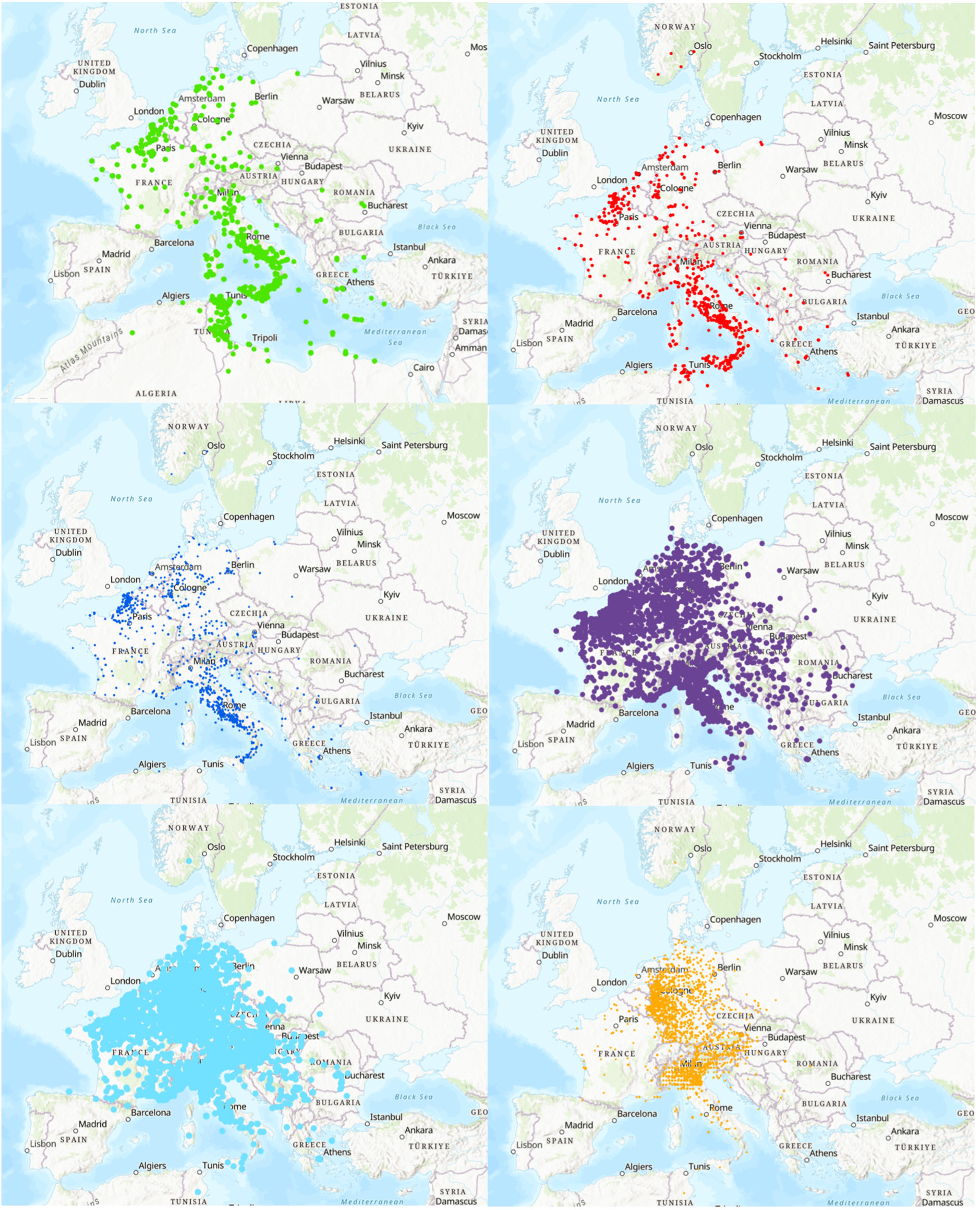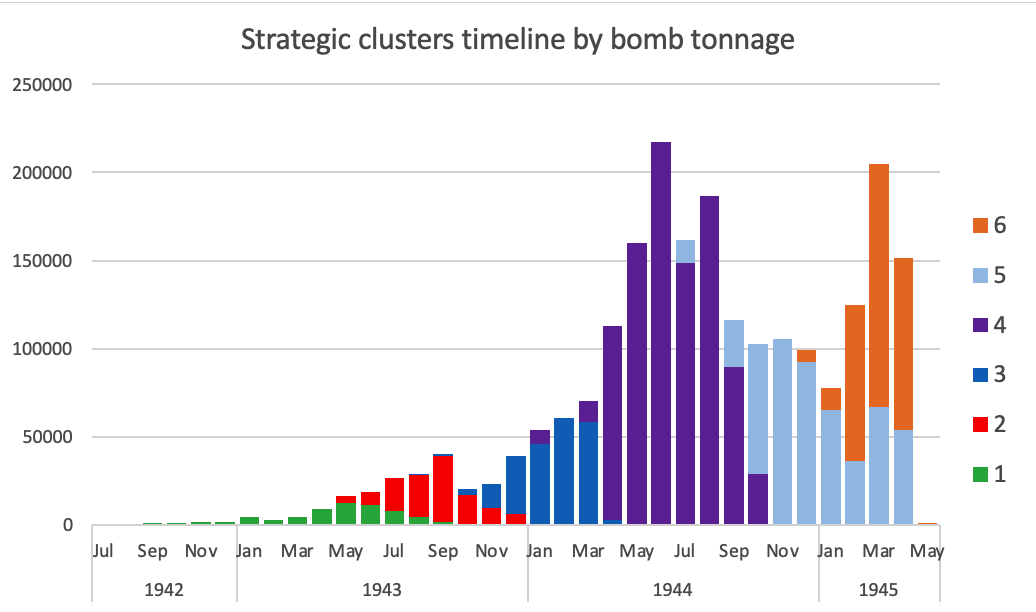Thor: Analyzing the USAAF WW2 Strategic Bombing campaign
The project analyzes the USAAF World War Two bombing missions in the European or Mediterranean theatres to determine if they were primarily driven by a Germany-centric campaign meant to break the back of the German military-industrial complex and the will of the German people to wage war. The analysis and the data can be visualized and analyzed on the USAAF WWII Strategic Bombing Campaign Exploration - Purdue site.

The analysis employs the statistical approach of "spatiotemporal clustering," which determines the geographic areas and periods in which the missions were clustered. The hypothesis is that if the campaign was Germany-centric, it should move from West to East in a series of clusters mainly focusing on Germany.
The analysis identified six strategic clusters, each with a clear geographic center of gravity and a specific duration

Four out of six centers of gravity are outside Germany, while their progress is from South to North and slightly West for most of the war. Only in the last month of the war did the center of gravity of the campaign move East toward central Germany. More concretely, the clusters start in North Africa, drifting from Tunis to South and Central Italy, to Western France, and only in the last part of the war, after mid-1944, gravitating toward Germany. Significantly, less than 50% of the ordinance dropped by USAAF in World War Two in Europe was directed at Germany. The temporal durations of each cluster also capture discrete campaigns aligned with the slow but methodical progress of the war on the ground. In addition, we announce future work that will focus on operational subclusters, which will reveal specific explicit and implicit campaigns. Overall, the paper reveals the scope and magnitude of the operational tethering of what was supposed to be a strategic campaign. Methodologically, it demonstrates the power of modern data science to reinterpret the past in a rigorous, hypothesis-testing manner.

